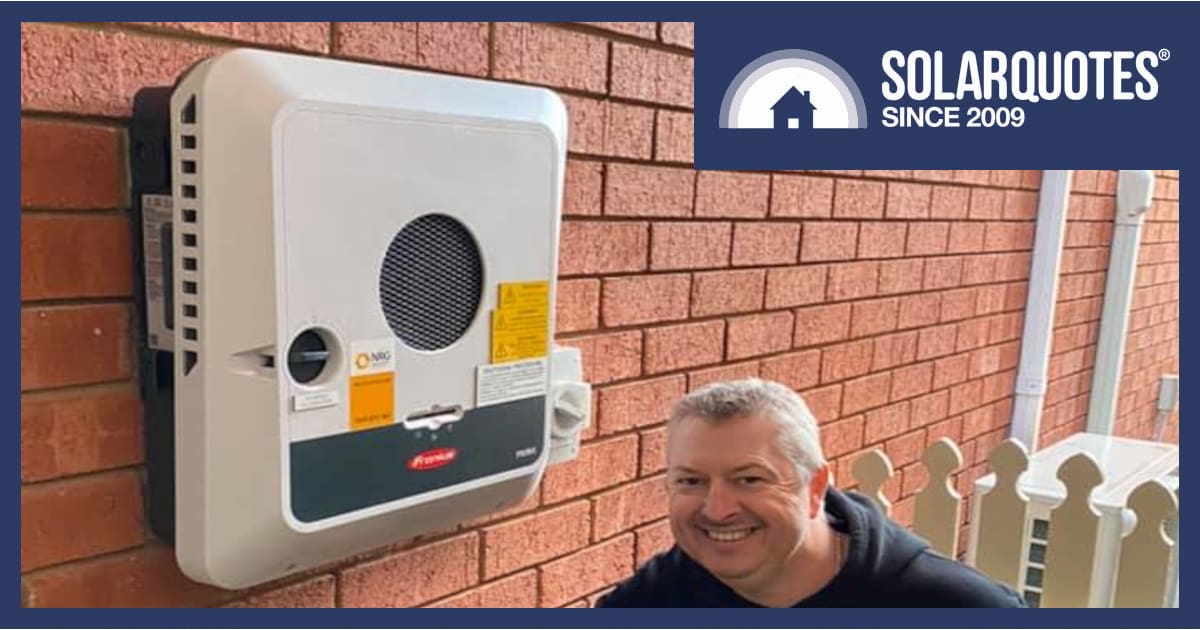
For years the West has been a sorry state in solar terms. The only networks in town have draconian 5kW limits on inverters, and it makes the rest of Australia give them side eye. Why do the western weirdos hate sunshine?
Thanks to Austrian manufacturer Fronius though, there is now a 10kW inverter option available in WA, all you need is a well-trained installer.Fronius has run a 12-month testing program to present a well-researched case to Western Power authorities for using 10kW single-phase inverters.
What they’ve proven is that a 10kW inverter with a 13.33kW solar array will yield between 32% and 99% more energy, compared to a standard 5kW inverter with 6.6kW solar array.
The larger array will get to full 5kW output earlier, and continue later into the afternoon, but Western Power’s 5kW limit is basically useless in winter. What’s more beneficial to you and the network is the near doubling of output across the low season.
When everyone is scratching for energy in winter, your Fronius system is working twice as hard.
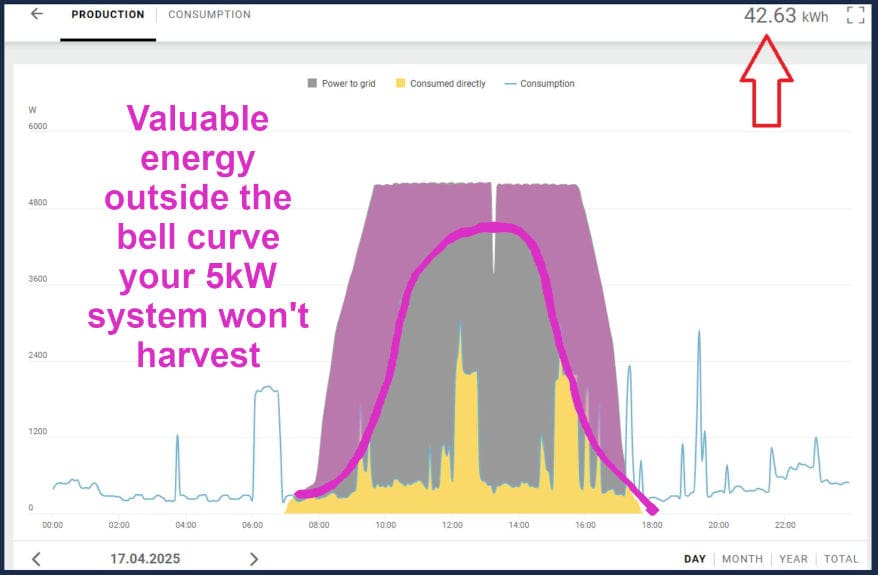
As time-of-use pricing becomes the norm, having solar available to use earlier and later in the day becomes more valuable.
5kW Is Still The Limit, Until It Isn’t
Western Power has decided an Absolute Generation Limit1 of 5kW is still in order, but they’ve been persuaded by the boffins at Fronius to allow the 10kW Primo Gen24 to be commissioned via a special manual approval, for which your installer needs training before they apply.
It’s similar to the Tesla Powerwall 3 — what could be an 11kW machine is limited to 5kW, so Western Australian commissioning effectively gives you a Powerwall 2½.
However Fronius has gone one step better. If you add a battery, the 10kW Gen24 will operate at a full 10kW capacity when there’s a grid outage.
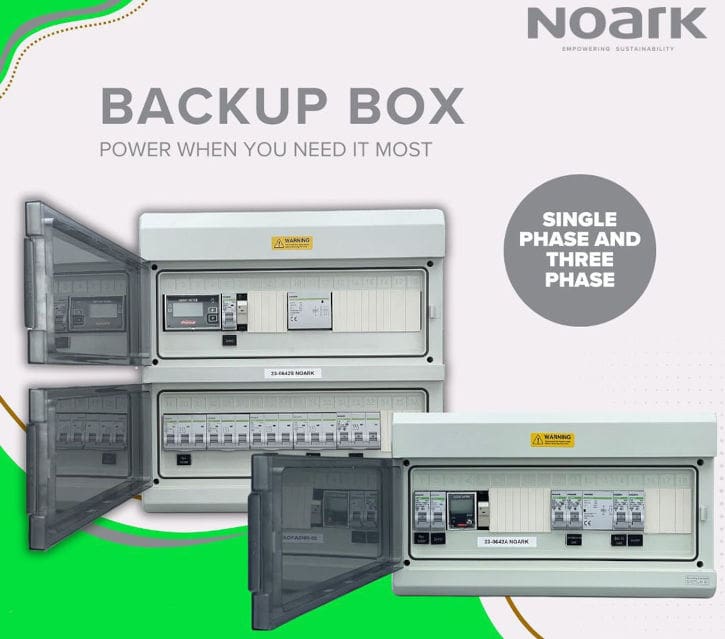
When installing a battery, you’ll need a “gateway” device which can be bought prebuilt or integrated into your switchboard.
It’s Not What You Know, But Who
Installers in the west have a vital resource with sales engineer Shane Arnold organising the kind of support that quashes problems before they arise. He insists that service issues are raised via the online support tool Fronius SOS, but he’s there on the phone backing it up.
As an 80-year-old international company, Fronius has excellent web resources, but the sheer volume of documents is equally a curse. Again thanks to Shane and his curated Whatsapp group, Australian installers can find Australian support material without wading through the Italian, Polish or American dross.
This Isn’t An Advertorial
The sceptical reader might wonder, but to be honest, I just like seeing quality products on the wall.
Cheap customers deserve what they get to some extent, but after years of trouble-free service, I find it a bit disturbing when people are keen on chintzy battery hybrids that can’t talk to legacy equipment.
I have equally advocated for saving good equipment from the streams of e-waste we create. Fronius build inverters that are retro-compatible with new network company requirements, so adding more solar doesn’t render them obsolete.
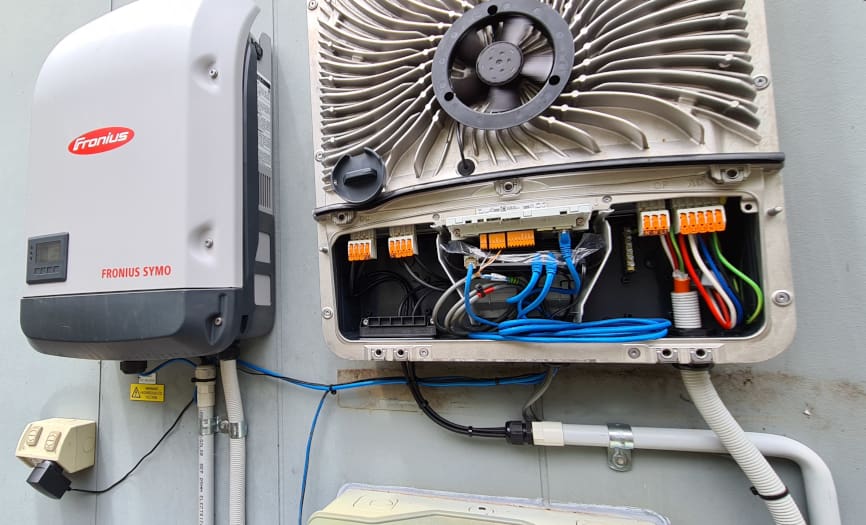
When I installed this new Gen24 beside the Snap, both units talked to the internet, but we had to wait for firmware to make them talk to each other.
Roaring Success
Yes, I’m a Fronius fanboi… which is a bit of an in-joke because Fronius inverters perform better as they have fans to keep them cool.
While some of the Snap-inverter range had two or three fans, which were described by disgruntled customers as roaring jet engines, I preferred to think of them as a statement of purpose. At full noise they were making lots of power.
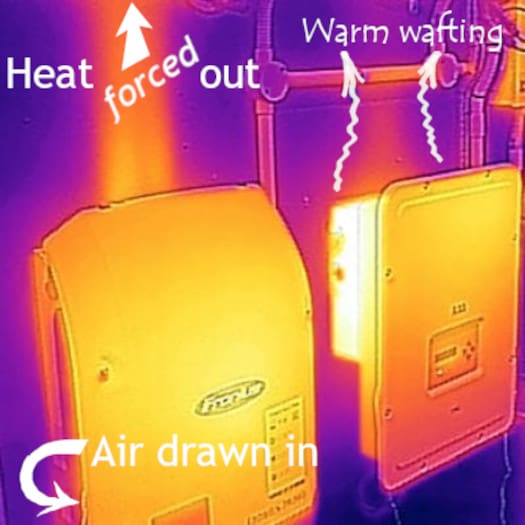
Comparisons of active and passive cooling
In response to these complaints, the Gen24 series inverter got a bigger heat sink and bigger fan that runs much slower, so it makes a fraction of the noise.
“For every 10°C increase in temperature, the life expectancy of an electronic component is halved.”
Others marketed against this noise, with passive cooled heat sinks that were supposedly silent. However, they would suffer lower yield and in some cases be forced to add temperature warning stickers because they ran so hot.
So I find it amusing that the 15kW Sungrow 3-phase inverter I installed last year does have a sneaky little fan on the back, despite what the salespeople say about their smaller, quieter units.
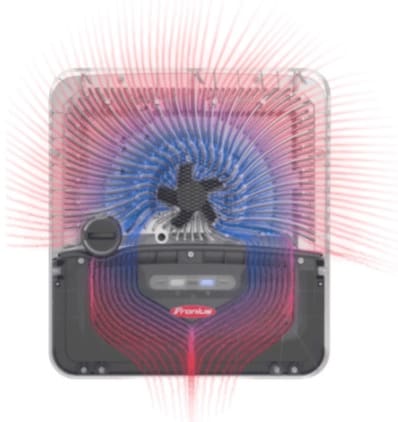
A lovely piece of form and function, it’s almost a shame these fins get covered up
Being Left Behind?
I’ve spoken to installers who are all in on Sungrow, because they are great products, have a solid history and good support.
Many really rate GoodWe as a great value proposition with a well-integrated EV charger, something Sungrow has only just released.
Others are telling me Sigenergy are now the undisputed champion of installation speed, features and aesthetics.
Still, nobody else I’m aware of is offering a backup supply without a battery, like the Fronius PV Point does.
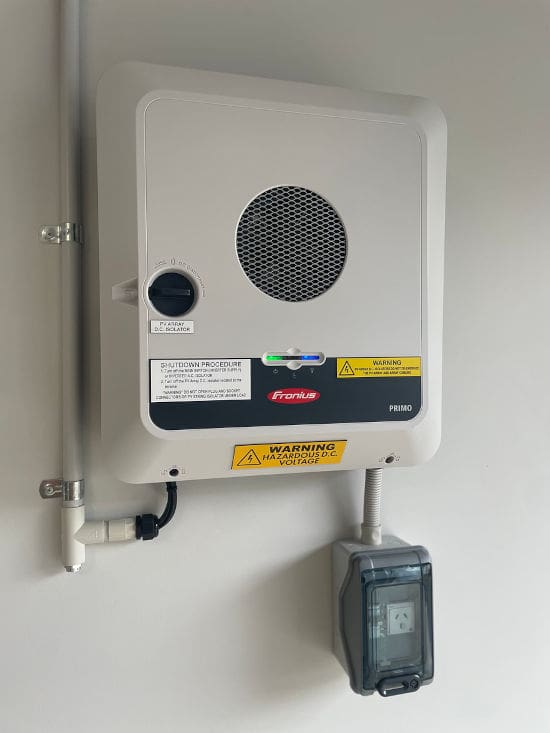
PV point will run 3kW of load provided it’s sunny. Great for charging devices and keeping the internet on in an emergency.
Tall Poppy Syndrome
I field complaints that Fronius just aren’t leading with innovation anymore, they’ve only got two input channels, they’re too expensive, the BYD batteries aren’t big enough, the WiFi is flakey, the commissioning process is too hard.
Still when I speak to those running the networks, the people at SAPN, Ausnet, Powercor and the like, they all say the same thing. Fronius are solid and their engineering team is great, “we don’t have worries with them” (like we do other inverter makers).
And I have to point out that Fronius doesn’t use the customers for beta testing, nor the installers as donkeys to carry it out.
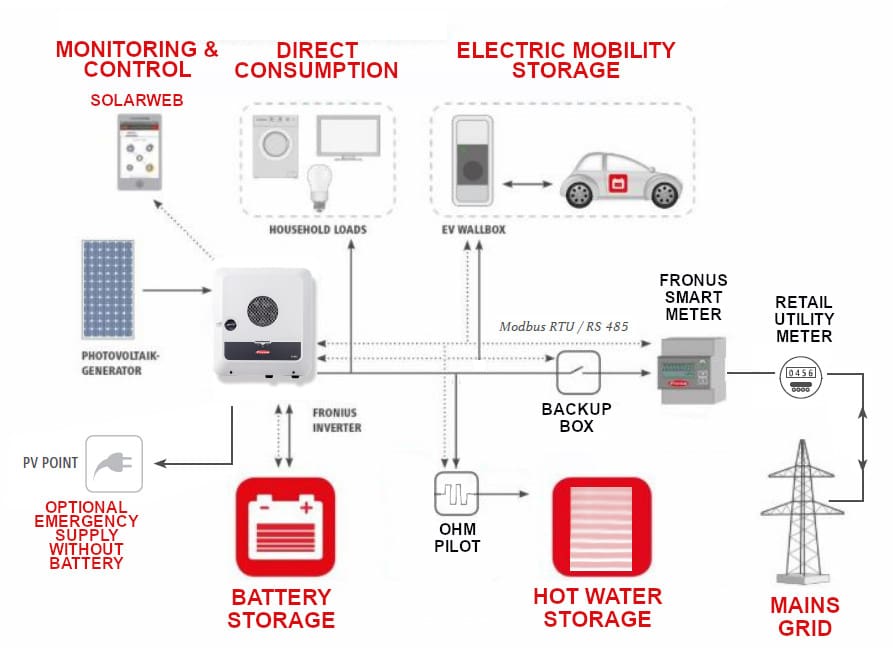
All these competing technologies are better managed under one ecosystem
Lightweight Hybrids Are Not Off Grid
Fronius are still running their inverters at high frequency to knock off other solar you might have running during an outage. It would be nice to see them offering larger units, able to work in parallel, but stepping back to a rational distance, I can see why they maintain a conservative position.
Grid hybrid machines aren’t designed to do what a proper remote area system does.
Fronius don’t warrant them for that service. If you want to treat the grid with contempt, then you want a different solution.
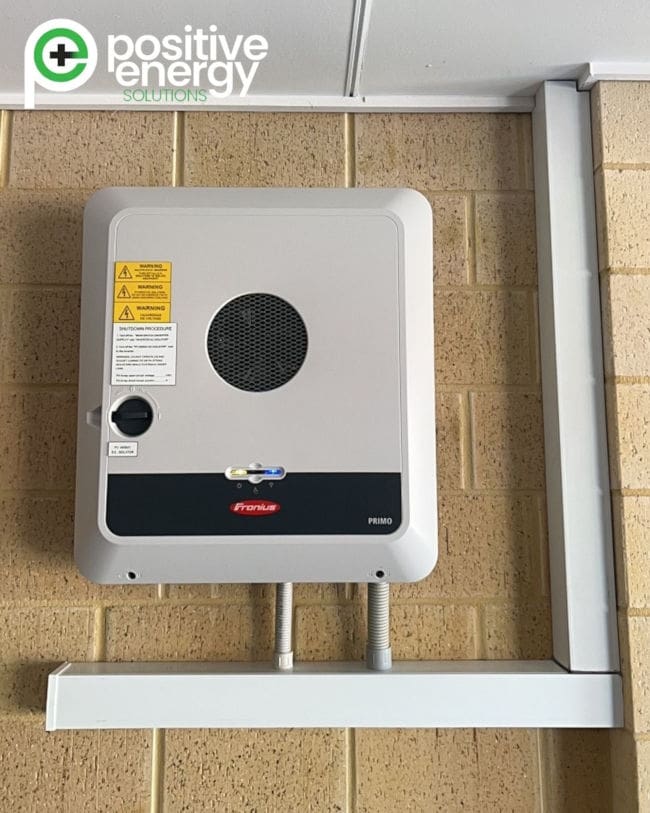
Fronius Gen24 Primo
Prepare For The Future
If you’re in the West and you have a hankering for lower power bills, solar is a no brainer.
For 17 years the only consistent complaint I’ve heard from solar owners is “geez I wish we had more”.
If you don’t have a budget for a battery right now, then the 10kW Fronius Gen24 Primo can get you 13.33W of solar power, with an option to install a battery later.
However it’s worth investigating the WAGov $10,000 interest-free loan scheme for batteries too. This can be worth more to you than their up-front incentive. There’s also the WA battery rebate scheme that launched this week — just be aware that it requires joining a VPP.
Either way you can get some quotes by clicking here. Just make sure you add some notes at the end, requesting 10kW Fronius goodness.
Footnotes
- Absolute Generation Limit — AGL is a confusing acronym for those of us who don’t live in WA ↩

 RSS - Posts
RSS - Posts


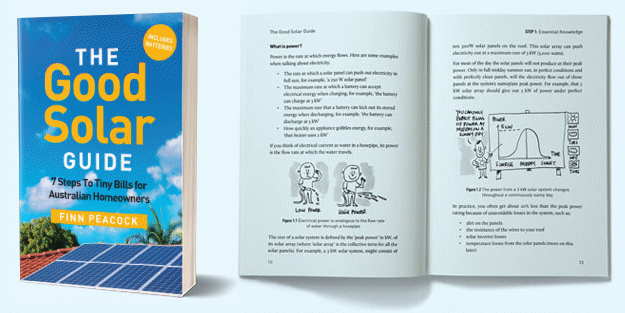
So, allowing one inverter brand to go to 10kw. Hardly innovative are they?
Given they pay you bugger all for your power you might export now, is it possible to go for a larger system that doesnt export to the grid and not be governed by their inverter size limitations?
Can’t do that in WA
they really are a pain then aren’t they!
It has been done before. My friend has a 12.5kw solar system with 8kw inverter connected to batteries, that has been set up not to export to the grid at all. There was a huge amount of back and forward taking over 12 months to satisfy the engineers at Western Power
Hi My sales rep says by installing the sigenergy 2 x 8kwt battery with 5kwt inverter,gateway & catch control will compliment my existing SMA 5kwt inverter. This will make a 10kwt inverter when they’re talking to each other!
Is this true,I’ll have a 10kwt inverter with my 16kwt of battery so nicely compatible ?
With thanks
Bryan Heard
I just ugraded to a 10kW Fronius Gen24+ inverter with an extra 6kW of panels on my single phase home last week in Perth. However, I also read that as of July 1st 2025, Western Power are allowing 10kW inverters that are 5kW export limited.
Presumably this means we aren’t just limited to the Fronius inverter, and other 10kW options (e.g. SigEnergy) are now supported on SP?
Thanks Anthony.
FYI – As of July 1st, Western Power are now allowing 10kW inverter capacity on single-phase properties. 1.5kW Export Limit required, but no Generation Limit.
You can even go larger as long as a 15kW Site Generation Limit is set
https://www.westernpower.com.au/siteassets/documents/manuals-guides-and-standards/basic-embedded-generation-connection-requirements/basic-eg-connection-technical-requirements-2025.pdf
No worries Mark,
Thanks for the link, we’ll get our guides updated with that.
Just to clarify, you could have a 5kW Primo and then add a 10kW Gen24, (ie 19.9kW of solar without a battery or 22.5kW with a battery) so long as it’s export limited to 1.5kW?
Maybe they don’t hate solar so much now 😉
I asked that question during the Western Power webinar last week. Nigel said yes, as long as the site is Generation Limited to 15kW and a 1.5kW Export Limit set.
I’ll email you the webinar slides.
So, when will the table at
https://www.solarquotes.com.au/battery-storage/hybrid-inverter-comparison/?_sc=NTg2NzcwOCM2NTAzOQ%3D%3D&utm_campaign=250708+Weekly+Newsletter&utm_medium=email&utm_source=brevo#expand
be updated to include the Goodwe EHB series inverters up to 10kW and the Sungrow SH10RS inverters?
As the blog software deleted my comment that I just tried to post, so that the work that I put into it, was erased by the blog software, instead of the blog software returning to the text that I tried unsuccessfully to post, I will now try again to post the question, but, without the explanation and the details.
Why does the hybrid inverters comparison table not include for each hybrid inverter, the claimed switchover time from grid supply power to emergency backup power, and, can that significant information, that influences the decision as to which inverter to select, be included in the table, to allow people to make informed choices?
I have a 6.4kW Fronius Primo snap inverter running great for 6+ years. As part of working out if adding a battery makes sense for us, it became clear the first step is to increase the roof solar to 13.3kW – can you explain how a setup with a 10kW Gen24 Promo sitting next to the 5 kW snap inverter (as shown in the picture) runs in a integrated fashion? I am in WA and I am also onboard the idea of not creating unnecessary waste.
Hi Andrew,
As Mark has pointed out the new rules for WA are found here.
It’s worth remembering that batteries enable more solar too. 133% is no longer a ceiling so you can run a 5kW Fronius to full manufacturer spec of 7.5kW
Seems like the west are more than 2 hours behind the east coast.
Just for clarification, you can have the biggest system possible for your premises, maybe 30kw of solar array and a 25kw inverter, and 40kw of batteries, just as long as you disconnect from the grid. You could run fully self sufficient all year.
Single phase systems can have a 10kw inverter max, but only export up to 5kw max.
3 phase systems, on-grid, can have a 15kw inverter with approx 33% over inverter size in panels, which would make around 20kw of panels. In WA, you won’t get a Feed-In-Tariff, so make sure your batteries will satisfy your needs.
Alot of people don’t realise that they should calculate their usage based on the worst 3 months of the year, being winter months. You need to have enough input to charge your battery bank even on horrible overcast rainy days.
A 3 phase system allows you, to most often, fully support your house load in total. A Sungrow SBH battery bank will pump out 50amps continuously, which is sufficient to cater for all your power needs.
Steve, with approximately the off-grid complement you cite, my needs are indeed met all year round – *including* a BEV as the only car. (Your extra 10% PV and 15% less battery would be ideal, but immediate roof area was my limit.)
Produced & consumed 65 kWh in the last two (sunny) days (40.6 kWh into the BEV at 7.2 kW), after only 19.4 kWh total over the prior 3 rainy days. But the 27 kW array yielding just 1 kW in drizzle lets the 46 kWh battery easily bridge till there’s sun again. (It’s never been below 70% SoC, as I trim consumption in gloom.)
A 63A main switch allows 14.5 kW of active system loads, even on single phase. If that suffices, then it’s cheaper than 3 phase, and there’s no phase balance question. (3 linked inverters instead of one 3-phase would solve that?) But 3 phase would avoid one 20A breaker sometimes tripping on a 1.5 kW induction motor start.
The BEV’s 12,000 km, taking 2.6 MWh, is my only “export” avenue, but it does displace a bunch of CO₂ emissions.
There’s a similar problem in QLD where Energex have a 10kW of inverters limit per phase. A lot of people have a 5kW solqar inverter plus a Powerwall 2 (or simlar AC coupled battery) which also has a 5kW inverter that counts towards the limit. So that’s it. If you want to add more storage you have to throw it away and get a 10KW hybrid inverter and battery stack of your choice. Realistacly they could allow a second Powerwall 2 such that there was 5kW of solar inverter and 10kW of battery inverter. Other DNSP’s appear to allow this. I cant see anyone wanting to export their solar and their battery at the same time but it would be nice to be able to export 10kW from the batteries. Tesla gateway can manage export limits as well. People that already have more than one PW2 on different phases could then move them into pairs and use the free’d up phase for a new hybrid system
The 5Kw limit has only been for single phase. If you have 3 phase power you can go up to 15kw, you will just lose your FIT if you go over 5kw.
As someone has already stated here, the single phase limit has now been lifted to 10kw.
Actually the three phase limit is now 24kW.
WA still has mandatory 32A / phase supply limit (circuit breaker) on the incoming mains and such systems would be export limited to 1.5kW which means you need so pretty stout daytime loads to feed
Anthony, with two 6 kW Gen24 Primos in parallel, and two 8 kVA Victrons in parallel with that, for gridforming & night power, I’m moved to ask “Do the bigger Primos not parallel too?”
Incidentally, the Fronius monitoring integrates nicely with the Victron, so I can see, in real time, the voltage, current, power yield of each MPPT input on each inverter, plus the additional separate MPPTs. All in a window on the PC, as well as on the system controller. It warms the techy heart..
And “Fill the roof” really rules in winter. The 27 kW of PV only supplied 9.5 kW mid afternoon, due to low angle sun, quickly declining after 4 p.m.. But whacking 16.6 kWh into the BEV (= +100 km range) plus 3 kWh into the HWS *after* 2 p.m. in the depths of winter is great after the run of low yield rainy days. (32.8 kWh for the day)
Sounds like a great package Eric.
Victron have a very pretty monitoring portal with good controls and Fronius integration.
Just need to be mindful that Victron 5000VA is really 3.7kW continuous when you look at the battery charging spec.
And the EV charger simply didn’t do what it said on the tin when released. (I think a couple software updates had it fixed but using the customers for testing is a bit much imo.)
As ever you need a good installer to navigate the foibles of any brand.
Yes, Anthony, their (marketing optimised) model designators reflect kVA, not kW. That’s why I designed in two 8 kVA Victrons for 12 kW of gridforming capacity to equal the two 6 kW Fronius. The 8 kVA Victron can charge at 110A ~ 5.5 kW, so two = 11 kW. The two additional 100A MPPTs bring the charging capacity up to 21 kW, more than the 27 kW arrays realistically deliver. In any event, I limit the battery charging rate to 15 kW (300A into 3 parallel 304 AH battery banks – 1/3C charging – nice & gentle.)
Often it’s the MG4 which is charging at 7 kW, typically straight out of the Fronii, as half the system idles when there’s less than 10 kW load. Despite the EVCE SW upgrade, I just whack 7 kW into the BEV in manual mode in sunny weather, and drop it back manually as sunlight dwindles in the afternoon.
With 46 kWh of LiFePO₄ house batteries, I am finishing off a 24 kWh BEV top-up with 4.5 kW from the batteries as the sun gives up. It’s negligible battery cycles, & leaves ample reserve.
To finish off: It was a bigger and more diverse off-grid set-up than the local installer had previously tackled, so the wholesaler’s expert, the installer, and I spent a few hours on the phone over the days of installation and commissioning. Most customers won’t see the installer’s backup advisors, but when you’re the system designer, some questions come back around the loop.
A good designer is key, for a substantial off-grid system. The one my brother used up in NSW is booked out for months. It’s all too much to load onto the installer’s shoulders, if it’s a one-off – one bit of product weirdness or another will drive him nuts.
Paid and bright to you by Fronius..
Fronius has worst oversizing, DC coupling capabilities and charging capabilities in the market..
Hi Ania,
When you say DC coupling capabilities, can you clarify what you mean exactly?
How many others give you the flexibility to run parallel strings of modern high current panels?
We’re happy to air complaints but most customers I’ve spoken to have been very pleased with their Fronius.
They sometimes need reminding that price isn’t the ultimate decider, especially if you want something with recycled content, recyclable packaging, first world quality and an ethical design that prioritises field serviceability over disposable products.
Deye inverters can grid form (in the event the grid goes down) without battery connected too.
The synergy/western power network you can go up to 99kW but you get saddled with a 1.5kW export limit and no feed in tariff. There’s extra things needed to do to go above 15kW.
Would that 5kW limitation be on the horizon town supplies?
In WA the rule was always if you go beyond the mandated 5kW limit, your generous FIT of 10c/kWh after 3PM disappears.
What has been experience of users getting a Powerwall 3. Seems it isn’t on the approved list of equipments yet.
I was planning of getting the Powerwall coupled with GEN24 primo. Not sure if the battery would be allowed to discharged above 5kw due to the limits imposed by Synergy (really backward for state which produces these critical metals)
I agree, Anthony: the beautiful heatsink of my Fronius Symo should be on display, not hidden behind its grey plastic casing.
I’m thinking something translucent. Like the 1998 iMac, in Bondi Blue. Maybe with the 1999 “fruit” colours (lime, strawberry, blueberry, grape, and tangerine) as an option.
Good design like this should be seen (although maybe not heard).
Who do I call for “error state 475”
Situated in Lakelands Western Australia
Hi Ian,
475 means the inverter has detected insulation resistance below 1 MΩ between the DC conductors and ground.
This means current is leaking somewhere in the PV array, effectively a small short to earth. Not unlike dropping a toaster in the bath would trip an AC “safety switch”
The inverter halts operation to prevent safety risks such as electric shock or further component damage, but it may restart later in the day if the moisture has boiled off.
Could be moisture ingress into roof‑mounted isolators, damaged insulation on DC cables. Cracked or water‑logged PV modules, especially after heavy rain. Defective MC4 connectors or poorly sealed plugs. Occasionally, aged gaskets or failed seals on the inverter enclosure itself can trigger false readings.
If you click here you’ll find someone to help.